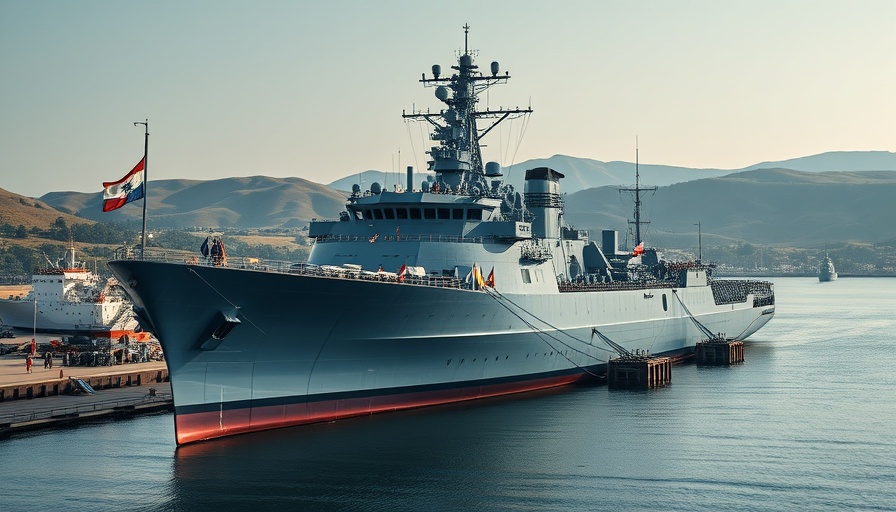
New Ship Launch Marks a Milestone in Naval Technology
SK Oceanplant has recently unveiled the ROKS Gyeongbuk, the second ship in the FFX Batch-III frigate series. This launch signifies a key milestone in South Korea's ongoing advancements in naval capabilities and shipbuilding technology. The FFX Batch-III program is designed not only to modernize the South Korean naval fleet but also to enhance the country's defense posture in the region.
The Future of Naval Warfare: What This Means for South Korea
The ROKS Gyeongbuk is equipped with advanced radar systems and anti-submarine warfare capabilities, aimed at boosting South Korea's maritime security. Analysts suggest that this frigate is set to play a pivotal role in countering potential threats in the ever-evolving dynamics of naval warfare in East Asia. The implications of this launch extend beyond national defense, reinforcing South Korea's commitment to technological innovation in military applications.
Significance of the FFX Batch-III Program
The FFX Batch-III program is not just about expanding the naval fleet; it symbolizes a shift towards greater autonomy in defense production for South Korea. This initiative aims to minimize reliance on foreign technology, highlighting a broader trend in defense strategies worldwide to develop indigenous capabilities.
Counterarguments: The Debate Around Defense Spending
Despite the advantages, there are counterarguments regarding the prioritization of defense funding. Critics argue that the resources allocated to naval expansion could alternatively address pressing domestic concerns such as healthcare and education. Thus, it's essential for the government to find a balance between defense needs and civilian welfare to ensure holistic national progress.
Global Trends in Shipbuilding and Naval Defense
Globally, naval defense is seeing a significant shift towards utilizing advanced technologies, such as artificial intelligence and unmanned systems. Countries like China and the United States are also upgrading their fleets, making it crucial for South Korea to maintain a competitive edge not only in shipbuilding but also in future maritime strategies.
As nations continue to navigate the complexities of international relations, innovations like the ROKS Gyeongbuk will be increasingly vital in shaping military diplomacy and regional stability.
 Add Row
Add Row  Add
Add 




Write A Comment